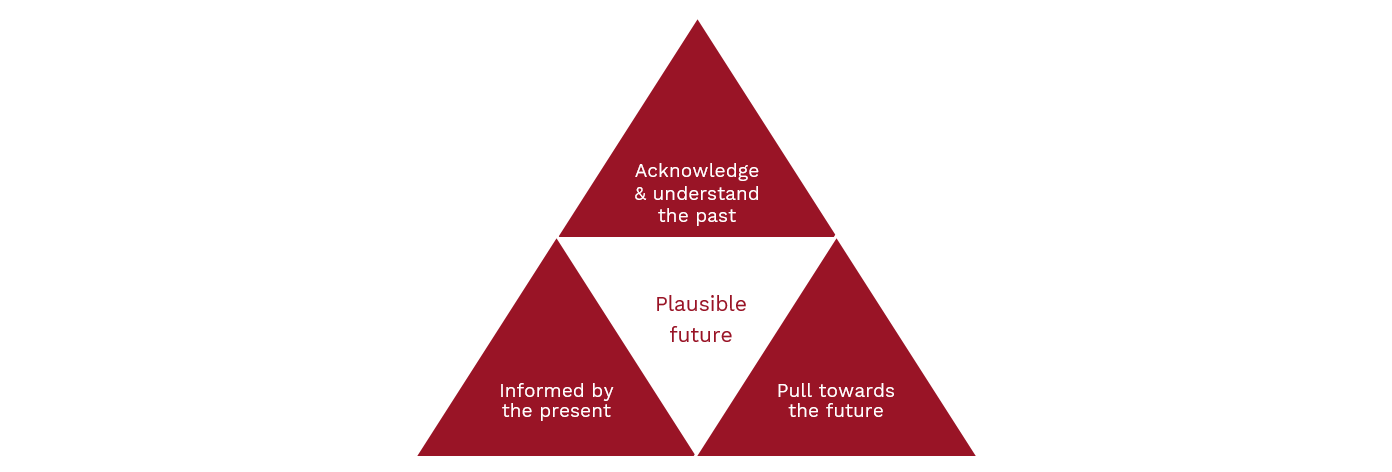The future Māori workforce - Part two
BERL is collaborating with Waikato-Tainui, The Southern Initiative and Tokona te Raki: Māori Futures Collective of Te Rūnanga o Ngāi Tahu on what the future of work looks like for Māori. It is the latest in a series of projects reflecting our shared commitment to a transformative future, where people have agency and choice in their working lives.
We are using Sohail Inayatullah’s approach to strategic foresight, which assumes there is more than one possible future1. His approach is truly participatory and allows for both disagreement, as well as enabling a sense of agency by creating a shared vision of the future. There is a focus on worldviews, metaphors and narratives, which aligns well with Te Ao Māori.
As part of this approach, we are utilising Inayatullah’s futures triangle framework. The futures triangle is a way of mapping the pull of the future, the push of the present, and the factors of the past.
Stage one looks at the past factors, which are the external systemic barriers as well as the internal knowledge and strengths that we carry into the present and future.
Stage two will look at the push of the present, and will largely be looking at statistics around demographics, income, and industries.
Stage three is the vision of the future. Rather than seeing the future as something that is “out there” with the robots taking all our jobs, we are approaching the future as the world we wish for. This vision of the world will be co-created in a series of wānanga that our collaborators will hold.

Find out more
This article is part one of a series on our research into the future of the Māori workforce. Find more about this project at:
Part one: Preparing our future Māori workforce
Part three: Exploring the forces that shaped the Māori workforce
Part four: Exploring the current situation
1 Inayatullah, S. (2008). Six pillars: futures thinking for transforming. Foresight, 10(1), 4-21.